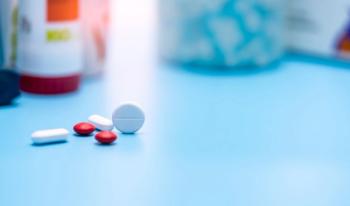
- Vol 37 No 10
- Volume 37
- Issue 10
The Rx of ADHD
Following the diagnosis of attention-deficit/hyperactivity disorder (ADHD), the next step is treatment, which can include parent behavior management training, school-based interventions, and medication. Here's a look at the latest in ADHD treatments.
Once attention-deficit/hyperactivity disorder (ADHD) has been diagnosed, the well-researched treatment approach for children with ADHD continues to have parent behavior management training (PBMT), school-based interventions, and medication as the main tools for reducing symptoms and impairment. There are newly emerging treatment modalities to be considered, that will briefly be discussed here. An additional key piece of the puzzle in caring for children and adolescents with ADHD is the way that their care is delivered.
Treatment guidelines
The American Academy of Pediatrics has divided ADHD treatment recommendations into 3 age groups: children aged 4 years to their sixth birthday; children aged 6 years through their 12th birthday; and adolescents aged 12 to 18 years. First-line treatment for children under the age of 6 years is PBMT. Medication recommendations at this age are reserved for children with moderate to severe symptoms that are not improving with PBMT, or when there are safety concerns due to their ADHD symptoms. It may also be indicated in children whose families are not able to access PBMT, or in children who have been expelled from multiple school or child-care settings. When medication is necessary in this age group, initiation of methylphenidate is recommended, which is off-label use in children aged younger than 6 years old. For children aged 6 years to their 12th birthday, treatment recommendations include PBMT, US Food and Drug Administration (FDA)-approved medication, and school interventions. For adolescents, FDA-approved medication is a treatment strongly recommended. Parent behavioral management training, organizational skills training, and school interventions are also helpful.1
Parent behavior management resources
When caring for children with ADHD, knowing what resources are available and reputable for providing PBMT in your area is an important task. The most intensive PBMT with evidence-based benefits for children in this age group is parent child interaction therapy (PCIT). This involves real time interaction between a parent-child dyad and a trained therapist. This may not be available in all areas, or may not be accessible for some families.1 Group programs for parents of preschool age children to learn about behavior management techniques are available in many areas.1 During the COVID-19 pandemic, many mental health providers have moved their services to a virtual format, that may be more accessible for some families, but may present new barriers for other families. At minimum, it is crucial to be aware of books like 1-2-3 Magic2 or websites like CHADD.org3 to recommend to families for behavioral management education and support.
School interventions
School-based interventions for patients with ADHD are integral to their treatment plan. Most often, these interventions should be formalized with a Section 504 Plan or an Individual Education Plan (IEP). Providing parents with information that they can use to request evaluation for a 504 Plan or an IEP from their child’s school is important when developing an ADHD treatment plan. A range of resources can be expected in the educational setting. Children with uncomplicated ADHD will likely qualify for a 504 Plan to provide support and accommodations such as daily report cards to enhance communication regarding the child’s progress, preferential classroom seating, or a quieter environment for taking tests. Children and adolescents with ADHD and co-occurring conditions such as learning disorders may require additional support in the academic environment with a more detailed IEP.1 Schools are working to provide special education services in a virtual format for children who do not attend school in person during the pandemic. Clinicians can check in with families to be sure services are being provided.
Medication management
The FDA-approved medications for ADHD treatment are listed in Tables 1 and 2. Stimulant medications have the most evidence4 and the largest effect size.1 The use of non-stimulant medication is to be considered when stimulants are contraindicated, when patients have experienced intolerable side effects on stimulant medication, or, for the alpha-agonists, as adjunctive treatment along with stimulant medication. Careful investigation is needed when starting stimulant or non-stimulant medication in patients with significant personal history or family history of cardiac disease. This investigation may include testing such as an electrocardiogram or referral to pediatric cardiology.1
There are many formulations of stimulant medications available. The process of selecting a formulation for your patient needs to take several factors into consideration. How many hours of the day will symptom relief be needed? It is worthwhile to spend some time understanding the patient’s daily routines: when medication will be given, how long they need the medication to be working for school, homework, extracurricular activities, or work responsibilities, and when they will be going to sleep. Providing treatment for adolescents with ADHD when they are driving is important, as they have increased risk of moving violations and crashes compared to adolescents who do not have ADHD.5 There is less abuse potential with longer-acting stimulants compared to shorter-acting stimulants, so use of these medications is recommended in most circumstances. Having familiarity with 2 or 3 of the longer-acting formulations from each stimulant class that are covered by the insurance programs common in your practice is usually sufficient. Determining how patients prefer to take the medication (if they are able to swallow pills or prefer a different method of administration) will also impact the formulation that is chosen.
Tips for prescribing stimulant medications
1. In most cases, the long-acting form of the medication is desirable
2. Start with the lowest dose
3. Titrate weekly to the most effective dose with acceptable side effects1
4. Follow up by phone or electronic messages, or virtual visits with weekly titration, utilizing trained office staff and/or templates for obtaining information.
5. Follow up visit within 30 days including height, weight, pulse, blood pressure, physical exam6
6. Use rating scales to measure improvement in ADHD symptoms and impairment
7. If intolerable side effects on first class of stimulants initiated, switch to the other class of stimulant medication.
Decreased appetite, difficulty with sleep onset, stomach ache, and headache are the most common side effects with stimulant medications.1 When initiating non-stimulant medication, symptom improvement is not expected as quickly. In this circumstance, less frequent contact is acceptable in the first month, but a follow-up visit is expected within the first 30 days.6
Pandemic considerations
During the COVID-19 pandemic, many students have less face-to-face contact with their teachers. Providers will need to increase their communication with patients, families, and school professionals when necessary to understand how effective the recommended treatments are in these new educational settings. At a minimum, progress reports from teachers on how students are doing with completion of their coursework may be helpful, in addition to use of the standardized questionnaires completed by those who have the opportunity to observe the child’s behavior. Providers, patients, families, teachers, mental health professionals, and mentors in the community will need to work together to provide the best possible care for ADHD.
Ongoing follow up care
During follow-up care for children and adolescents with ADHD there must be monitoring for co-occurring mental health disorders, and careful observation for conditions that may mimic ADHD. When primary care providers are uncertain about the presence of co-occurring or mimicking disorders, referral to subspecialists or mental health providers is recommended.1 When a co-existing mental health condition is identified, treatment of the most impairing condition is the highest priority. When possible, this treatment can be started by the primary care provider or, if necessary, referral to a mental health specialist.
Primary care visits are recommended every 6 months for children receiving treatment for ADHD, more frequently with medication changes, intolerable medication side effects, appearance of new or worsening symptoms, or concern for new co-occurring mental health disorders.1
Other treatment modalities
Newly emerging treatment modalities for ADHD include trigeminal nerve stimulation (TNS) and digital therapeutics. Trigeminal nerve stimulation for treatment of ADHD was evaluated in a double-blind, sham-controlled study supported by the National Institutes of Mental Health and showed few side effects and modest effect size in children.7 The TNS device gained FDA approval for treatment of ADHD in children aged 7-12 years that are not on medication.8 A new game-based digital therapeutic was given FDA approval following a randomized controlled trial that showed minimal side effects and some improvement with inattention in children aged 8-12 years that were not on medication.9,10 Although they have low risk of side effects in early studies and have gained FDA approval, these new modalities do not have studies proving adequate effectiveness to replace existing treatments.
These new treatment modalities are likely to have appeal to patients and families, with low risk of side effects. There are a number of other proposed treatments patients and families may ask about or may have tried such as dietary changes, nutritional supplements, neurofeedback, play therapy, etc, that have perceived lack of side effects, but lack of proven effectiveness.1 Discussion about these treatments help families understand that PBMT, school interventions, and FDA-approved medication have proven effectiveness, whereas these other treatments do not have adequate evidence to support routine use.1
Conclusion
Providing appropriate assessment and evidence-based treatment for children and adolescents with ADHD is rewarding work. The COVID pandemic presents challenges to all. Working together to provide ongoing care will require increased communication. Parent behavioral management training, school-based interventions, and medication continue to be the most important treatments to reduce the symptoms and the impairment due to ADHD.
For more information on ADHD, visit our sister publication, Psychiatric Times, for their series on
Reference
1. Wolraich ML, Hagan JF, Allan C, et al. Clinical practice guidelines for the diagnosis, evaluation, and treatment of attention-deficit/hyperactivity disorder in children and adolescents. Pediatrics. 2019;144(4):e20192528
2. Phelan, T. 1-2-3 Magic: 3-Step Discipline for Calm, Effective, and Happy Parenting, 6th edition. ParentMagic Inc; 2016.
3. CHADD: Understanding ADHD, For Parents and Caregivers. Accessed August 27,2020.
4. Wolraich ML, Chan E, Froehlich T, et al. ADHD diagnosis and treatment guidelines: a historical perspective. Pediatrics. 2019;144(4): e20191682
5. Curry AE, Yerys BE, Metzger KB, et al. Traffic crashes, violations, and suspensions among young drivers with ADHD. Pediatrics. 2019;143(6): e20182305
6. NCQA: Measuring Quality. Improving Health Care. Accessed August 27, 2020.
7. McGough JJ, Sturm A, Cowen J, et al. Double-Blind, Sham-Controlled, Pilot study of Trigeminal Nerve Stimulation for Attention-Deficit/Hyperactivity Disorder. J am Acad Child Adolesc Psychiatry. 2019;58(4):403-411
8. US Food and Drug Administration (FDA). Accessed Augusst 27, 2020.
9. Kollins SH, DeLoss DJ, Canadas E et al. A novel digital intervention for actively reducing severity of paediatric ADHD (STARS-ADHD):a randomised controlled trial. Lancet Digital Health. 2020;2:e168-78
10. FDA. Accessed August 27, 2020.
11. ADHD Medication Guide. Accessed September 6, 2020.
12. Micromedex. Accessed September 6, 2020.
Articles in this issue
about 5 years ago
The Dx of ADHDabout 5 years ago
Vesical fissure in a newborn female: A variant of bladder exstrophyabout 5 years ago
Bruise-like marks on a healthy teenage male’s backabout 5 years ago
Determining the cause of transient loss of consciousnessabout 5 years ago
Skin ailments and video games: Something else to worry about!Newsletter
Access practical, evidence-based guidance to support better care for our youngest patients. Join our email list for the latest clinical updates.








